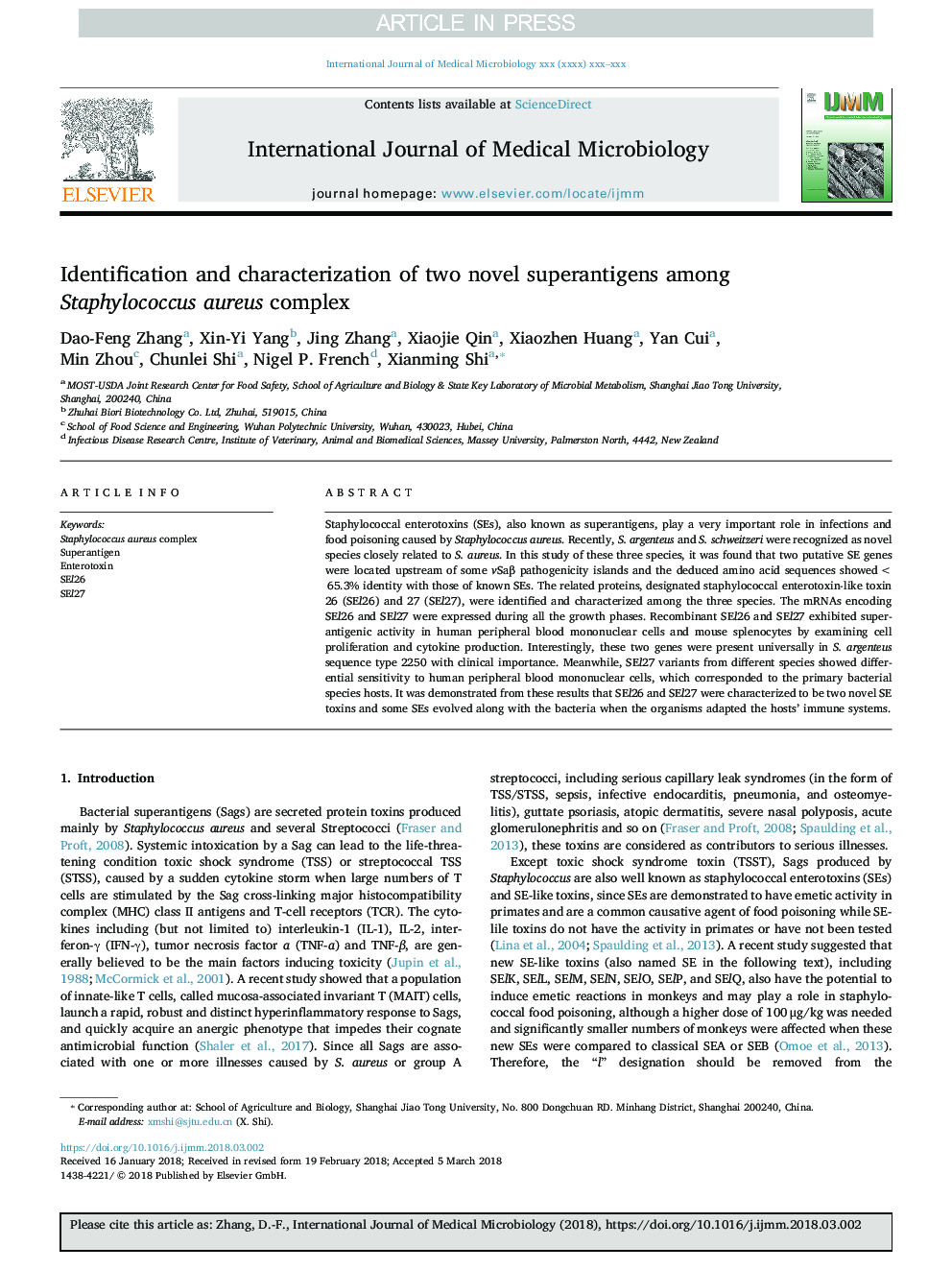| Article ID | Journal | Published Year | Pages | File Type |
|---|---|---|---|---|
| 8384850 | International Journal of Medical Microbiology | 2018 | 9 Pages |
Abstract
Staphylococcal enterotoxins (SEs), also known as superantigens, play a very important role in infections and food poisoning caused by Staphylococcus aureus. Recently, S. argenteus and S. schweitzeri were recognized as novel species closely related to S. aureus. In this study of these three species, it was found that two putative SE genes were located upstream of some vSaβ pathogenicity islands and the deduced amino acid sequences showed <â¯65.3% identity with those of known SEs. The related proteins, designated staphylococcal enterotoxin-like toxin 26 (SEl26) and 27 (SEl27), were identified and characterized among the three species. The mRNAs encoding SEl26 and SEl27 were expressed during all the growth phases. Recombinant SEl26 and SEl27 exhibited superantigenic activity in human peripheral blood mononuclear cells and mouse splenocytes by examining cell proliferation and cytokine production. Interestingly, these two genes were present universally in S. argenteus sequence type 2250 with clinical importance. Meanwhile, SEl27 variants from different species showed differential sensitivity to human peripheral blood mononuclear cells, which corresponded to the primary bacterial species hosts. It was demonstrated from these results that SEl26 and SEl27 were characterized to be two novel SE toxins and some SEs evolved along with the bacteria when the organisms adapted the hosts' immune systems.
Keywords
Related Topics
Life Sciences
Biochemistry, Genetics and Molecular Biology
Biochemistry, Genetics and Molecular Biology (General)
Authors
Dao-Feng Zhang, Xin-Yi Yang, Jing Zhang, Xiaojie Qin, Xiaozhen Huang, Yan Cui, Min Zhou, Chunlei Shi, Nigel P. French, Xianming Shi,
